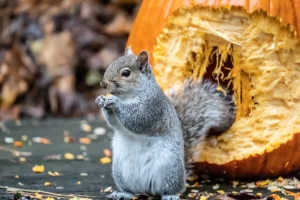Home / Blog / What Are Blue Mud Wasps?: Everything You Need to Know
What Are Blue Mud Wasps?: Everything You Need to Know
Get upto $350 Off

Scientifically reviewed by Daniel Baldwin, BCE, CCFS, CP-FS
-Published on May 17, 2023
-Updated on July 13, 2023
The sight of wasps around your home may be unwelcome due to concerns about stings. However, not all wasps are aggressive, including the blue mud wasp. Read on to learn more about what they are and why you may not want to remove them from your yard unless they’ve become a nuisance.
What are blue mud wasps?
Blue mud wasps or blue mud daubers are winged insects with six legs, two antennae, and a pair of wings. Most grow to be about 0.75 to 1 inch long. Blue mud wasps are usually easy to tell apart from other types of wasps due to their coloring. While most wasps are brown or yellow and black, the blue mud wasp is predominantly black with a hint of iridescent blue. It’s this shimmery bluish color that inspires the common name for the insect.
Where do blue mud wasps live?
You can find blue mud wasps everywhere from northern Mexico to southern Canada as well as on the Hawaiian islands. However, they’re most common in the Great Lakes region of the U.S.
Unlike other wasp species, the blue mud dauber is a solitary insect. It nests on its own, often taking over abandoned nests from the Sceliphron caementarium species of wasp (aka the yellow-legged mud-dauber wasp or black-and-yellow mud dauber). Once it locates a place to live, the wasp transports water to the site. The liquid softens the nest, allowing the blue mud dauber to reshape it to suit its needs. The female wasp will create her own nest out of the mud if no vacant nest is available.
Blue mud dauber wasps prefer to live in hidden, sheltered areas. They may nest under the eaves of homes, in the ceilings of porches and gazebos, in garages and outbuildings, in attics, and other places that are out of the way.
Are blue mud wasps carnivores?
Blue mud wasps have complex diets. The adults are herbivores, feeding off the nectar found in flowers. However, blue mud wasp larvae are carnivorous. The mother blue mud wasp will capture flies and spiders to bring back to the nest for the newly hatched larvae to eat.
Black widows are one of the species’ favorite foods. The wasps can move through the spiders’ complex webs without getting trapped. Once they have the spiders cornered, they paralyze them with venom delivered through stingers located on the ends of their abdomens.
What do blue mud wasps do for the environment?
In ecosystems, blue mud wasps perform two important functions. First, they help flowering plants by spreading pollen from one to another while they feed on nectar. In addition, they serve as a natural control for spiders, flies, and other insects that the larvae eat.
Are blue mud wasps dangerous?
Blue mud wasps do sting, but they’re not usually aggressive. You’d typically only need to worry about being stung if you accidentally disturb a nest. Although blue mud wasps aren’t poisonous, their stings can be painful. People who are allergic to wasps could suffer severe reactions if stung.
How to get rid of blue mud dauber wasps
Depending on where they’re located, blue mud dauber wasps may not need to be addressed. However, you may wish to get rid of them if the nest is in an area where it could easily be disturbed or if someone in your household is allergic to wasps.
To lower the likelihood of becoming a host for a blue mud wasp nest, try the following.
- Repair structural damage: Cracks, seals, and gaps in your home, shed, barn, or other outdoor structures can allow blue mud wasps to get inside. Inspect the interior and exterior of all buildings and make any necessary repairs to block off entry points.
- Prevent entry into outbuildings: Often, blue mud daubers take advantage of open windows and doors when looking for nesting sites, so keep them closed or install screens to limit entry.
- Eliminate clutter: Fallen trees, large rocks, wood piles, old furniture, yard equipment, and other clutter can draw spiders that may encourage blue mud wasps to build nests in your yard.
- Plant flowers away from your house: Start your flower garden as far away from your home and outbuildings as possible, as blossoming plants can attract blue mud wasps.
- Maintain your yard: Mow your lawn regularly and trim bushes and trees as needed. An overgrown yard, flower bed, or garden can bring spiders and flies that blue mud wasps feed on.
- Hire professionals: A professional pest control service can treat sites where blue mud daubers may nest to help keep them away and can safely deal with abandoned wasp nests from other species that blue mud wasps could move into.
Pest control services
If blue mud wasps have become a concern, call Hawx Pest Control. Our licensed pest control technicians know how to best address infestations inside and outside homes and buildings. We’ll put together the right treatment plan for your situation and use state-of-the-art technologies, tools, and products to deal with the pests. In addition, our expert technicians can give you customized blue mud wasp prevention tips to lower the likelihood of the insects coming back in the future.
Related Articles
Visit our blog to learn more.
→














